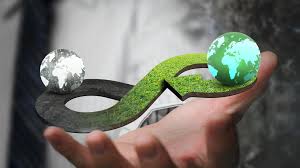As the world grapples with the dual challenges of climate change and economic inequality, 2025 marks a pivotal year for the rise of green economies. Governments, businesses, and consumers are collectively driving this transformation, aiming for a future that balances growth with environmental stewardship.
1. The Push for Renewable Energy
Countries worldwide are investing heavily in renewable energy. Solar, wind, and hydroelectric power have become cornerstones of economic development. The International Energy Agency (IEA) predicts that by 2025, renewable energy will account for 40% of global electricity production. Nations like Germany and India are leading the charge, creating millions of green jobs in the process.
2. Green Financing Takes Center Stage
Green bonds and sustainable investments have become mainstream. Financial institutions are pivoting towards funding projects that reduce carbon footprints and promote circular economies. The global issuance of green bonds is expected to surpass $1 trillion in 2025, with corporations and governments prioritizing eco-friendly initiatives.
3. Circular Economies Gaining Momentum
Businesses are embracing circular economy models, focusing on reducing waste and maximizing resource efficiency. Companies like Patagonia and IKEA are leading by example, offering repair and recycling programs for their products. This shift is not only environmentally beneficial but also a profitable strategy, as consumers increasingly demand sustainable practices.
Challenges Ahead
While the green economy presents immense opportunities, challenges remain. Transitioning from fossil fuels, addressing greenwashing, and ensuring equitable growth require concerted efforts. However, the momentum in 2025 underscores a global commitment to a more sustainable economic model.

